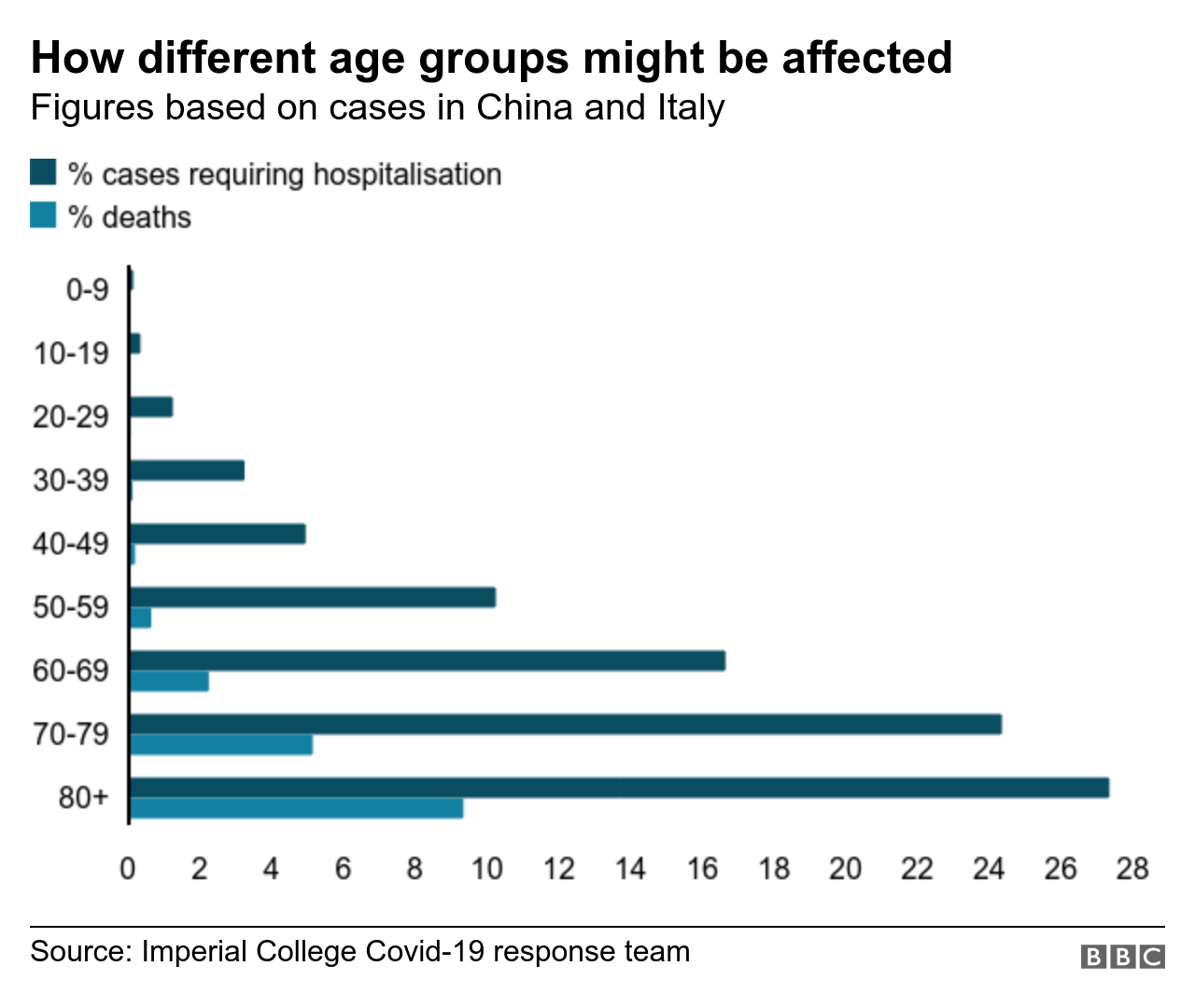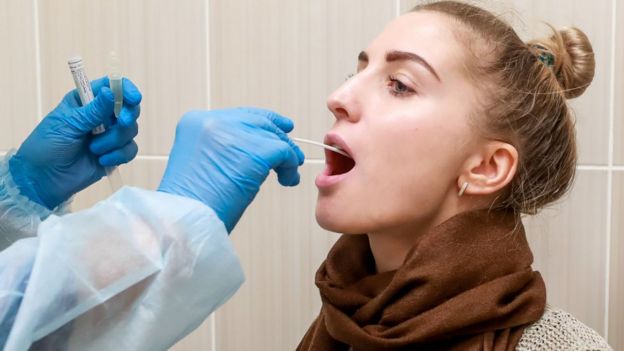The death of a 13-year-old UK boy who tested positive for coronavirus has renewed questions about the risks to younger people.
So far, the health message has been clear - the older you are, the more at risk you are from coronavirus. But the World Health Organization (WHO) has warned young people not to view themselves as "invincible".
So What Are The Risks At Different Ages?
It remains the case that, overall, older people are at higher risk.
But death and sickness data give averages, so within that there will be younger people who do unfortunately suffer more severe bouts of the illness - and in some rare, distressing cases it has been fatal.
Researchers at Imperial College London found a clear link between age and the likelihood of being hospitalised with coronavirus. And older people were also much more likely, once hospitalised, to need critical care:
- Fewer than 5% of under-50s needed to be hospitalised because of their symptoms, but this rose to 24% for 70-79-year-olds
- Similarly, only 5% of under-40s who ended up in hospital required critical care, compared with 27% of people in their 60s and 43% of people in their 70s
- This increased to 71% for people over the age of 80, according to estimates based on cases in China and Italy - two of the worst-affected countries
The average age of people being admitted to critical care units in England, Wales and Northern Ireland was 63, an audit by a research charity suggested.
Meanwhile, the US's Centers for Disease Control and Prevention (CDC) said early data suggested 53% of those people hospitalised were over 55 - which means about half were younger.
But when it comes to admissions to intensive care units and fatalities, a far higher proportion were in the oldest age categories (about 80% of fatalities were among the over-65s).


Individuals Aren't The Average
In Italy, 0.4% of cases among people in their 40s resulted in death compared with 19.7% of cases in their 80s, while in the US an estimated 0.7% of cases among people in the 40s were fatal.
Anthony Fauci, director of the US National Institute of Allergy and Infectious Diseases, said the total number of deaths were "overwhelmingly weighted toward the elderly and those with underlying conditions" but added that the virus "isn't a mathematical formula".
"There are going to be people who are young who are going to wind up getting seriously ill."
Dr Rosena Allin-Khan, a Labour MP and A&E doctor, told the BBC she had treated previously "fit and well" patients in their 30s and 40s who were now in intensive care and "fighting for their lives".

The WHO says "although the evidence we have suggests that those over 60 are at highest risk, young people, including children, have died".
A Chinese study of more than 2,000 children who had contracted the virus found that "although clinical manifestations of children's Covid-19 cases were generally less severe than those of adults' patients, young children, particularly infants, were vulnerable to infection".
Pre-existing Conditions
Underlying health conditions also play a role, regardless of age.
For example, there are about 4.3 million adults in the UK who have asthma, which puts you at higher risk of severe illness if you contract coronavirus - and this affects people of all ages.

What do I need to know about the coronavirus?
- EASY STEPS: What can I do?
- CONTAINMENT: What it means to self-isolate
- MAPS AND CHARTS: Visual guide to the outbreak
- VIDEO: The 20-second hand wash

In 2013, the last time the Office for National Statistics conducted a general lifestyle survey, 21% of 25-44-year-olds reported having a longstanding illness of some kind.
Some may have undiagnosed conditions which may not be discovered until a coroner investigates.
Stop The Spread
And while younger people might be less likely to become severely ill, they can just as easily spread the virus to others.
They may have no, or very mild, symptoms and not realise they are infectious.
And coronavirus seems to be considerably more infectious than flu - each person with the virus, on average, passes it on to between two and three other people, experts estimate.
Those two or three people can pass in on to another two or three more people each, and so on. This means a seemingly small number of people quickly turns into hundreds and thousands.
Social distancing breaks the chain of transmission.











0 comments:
Post a Comment